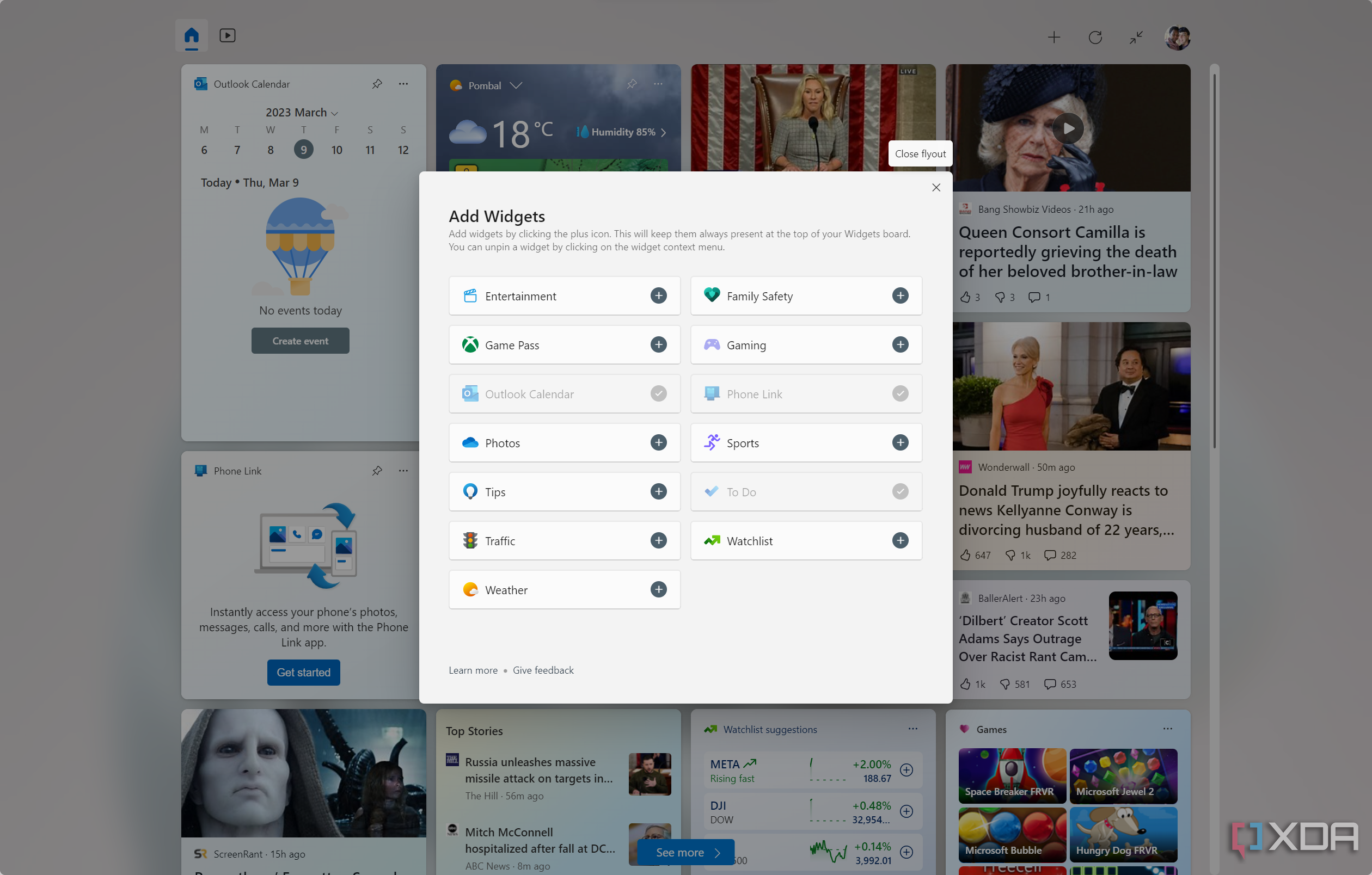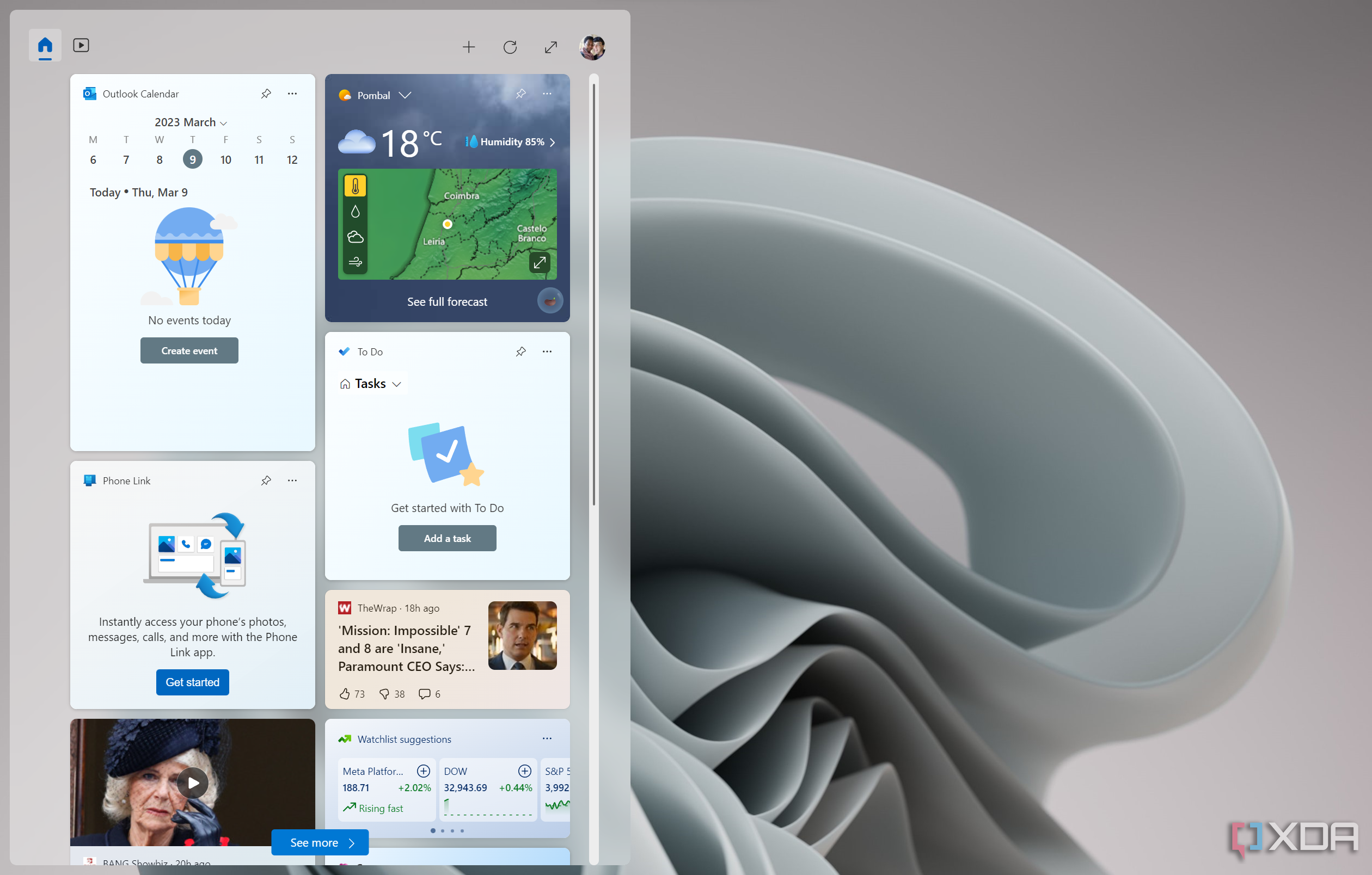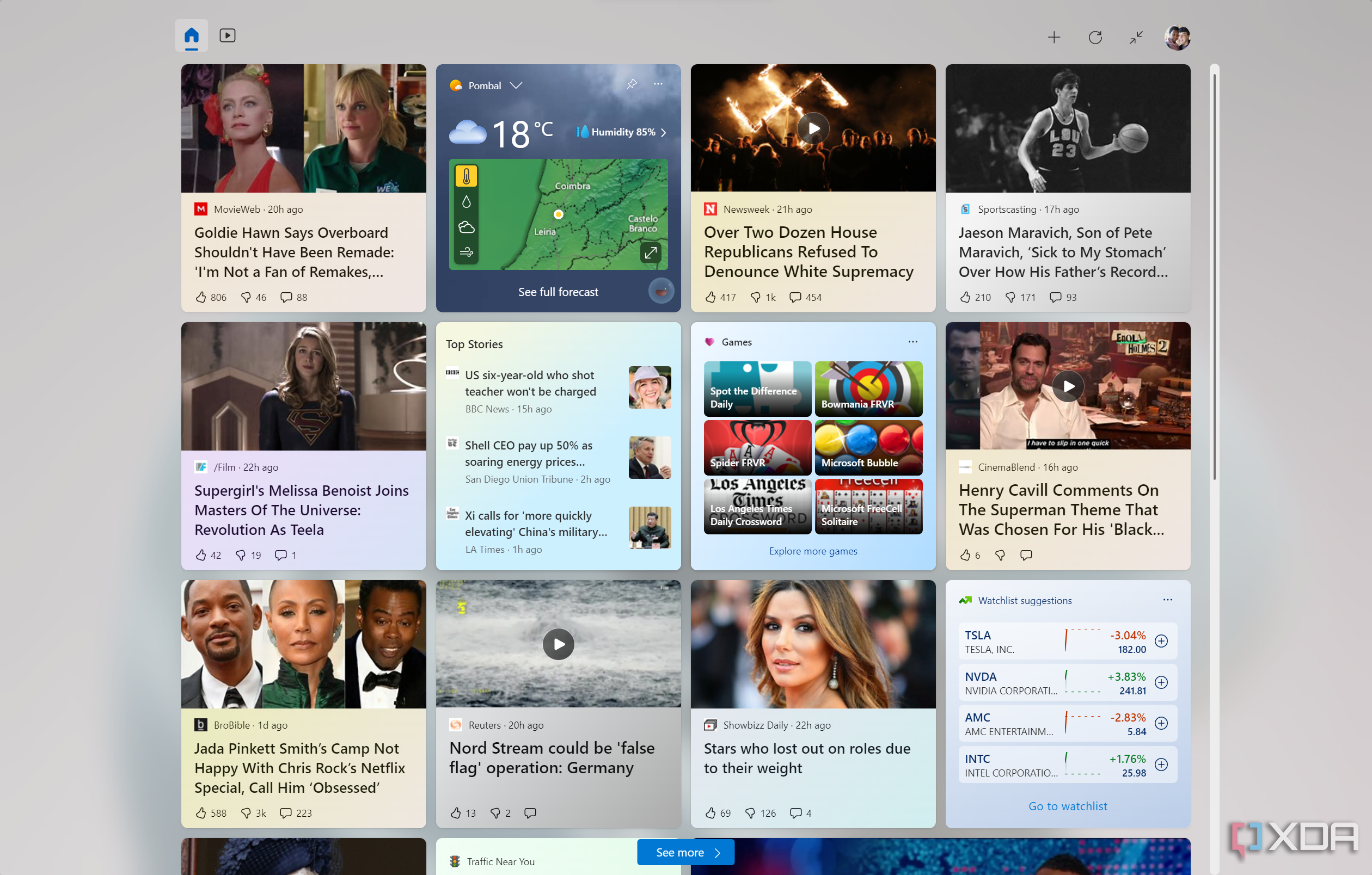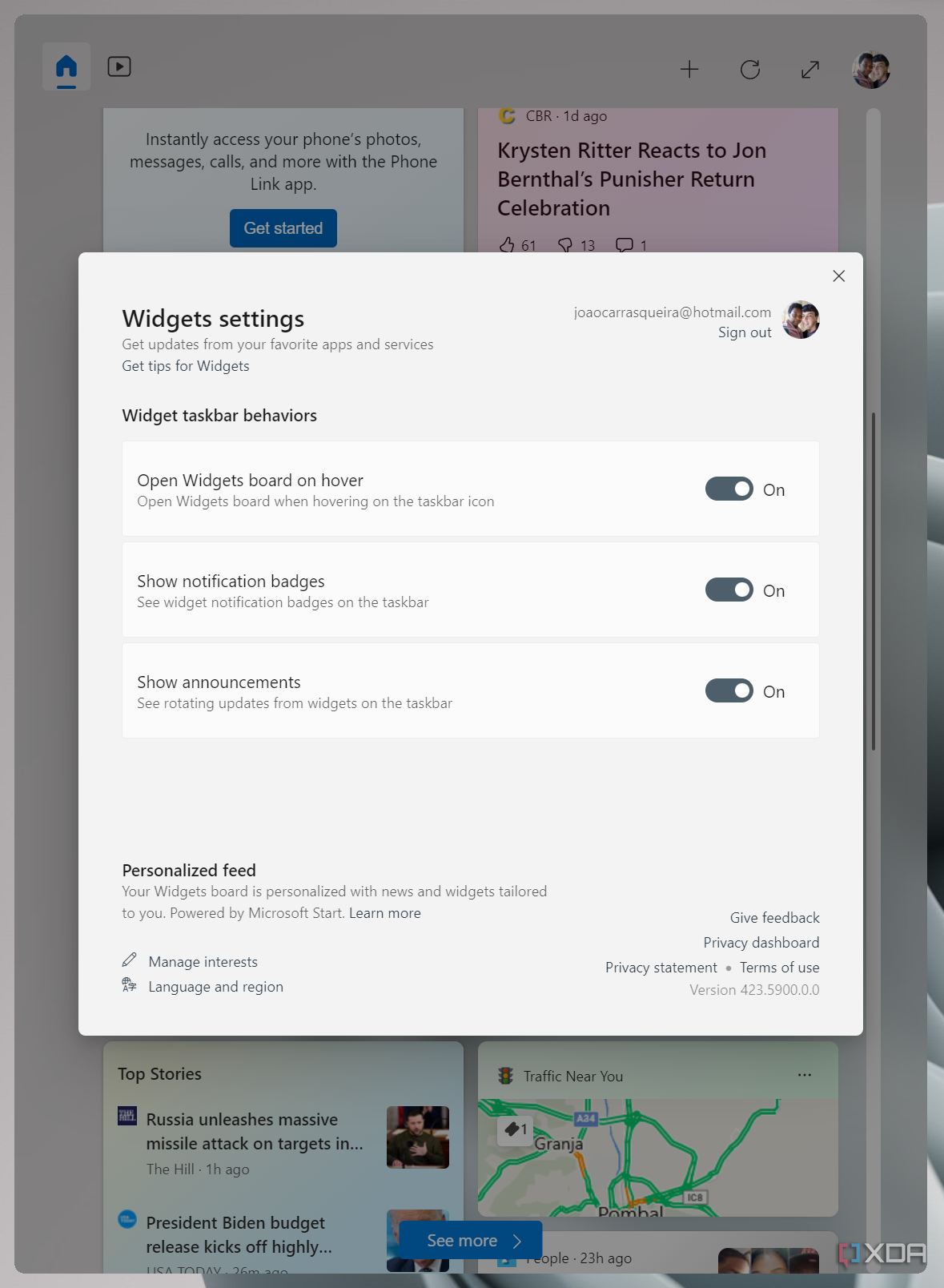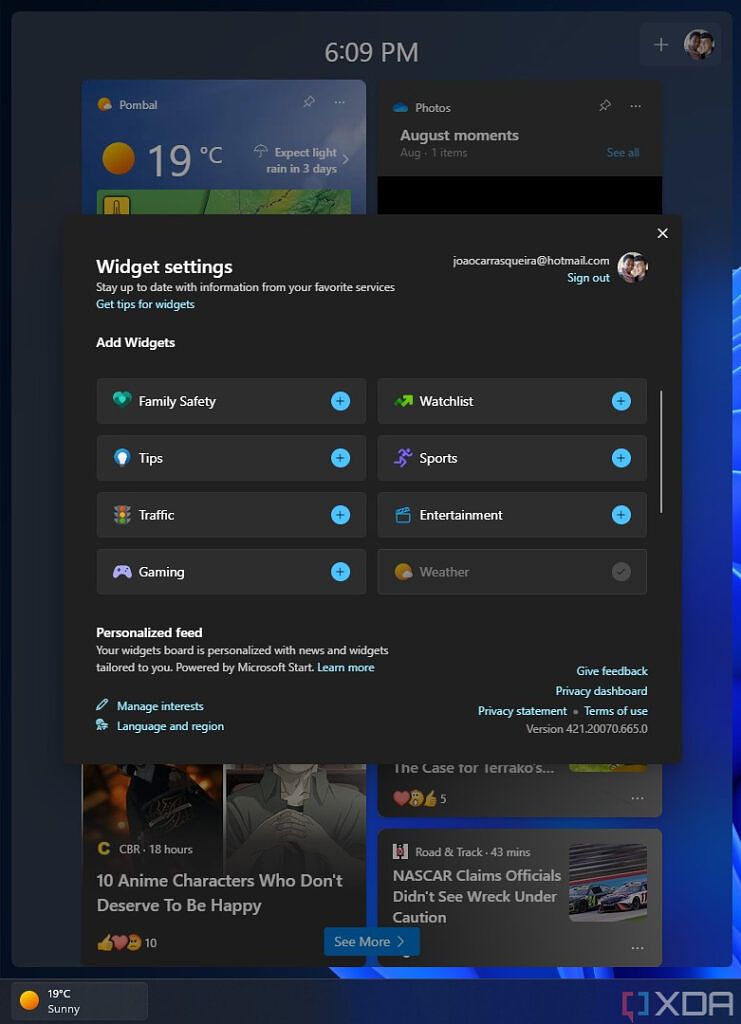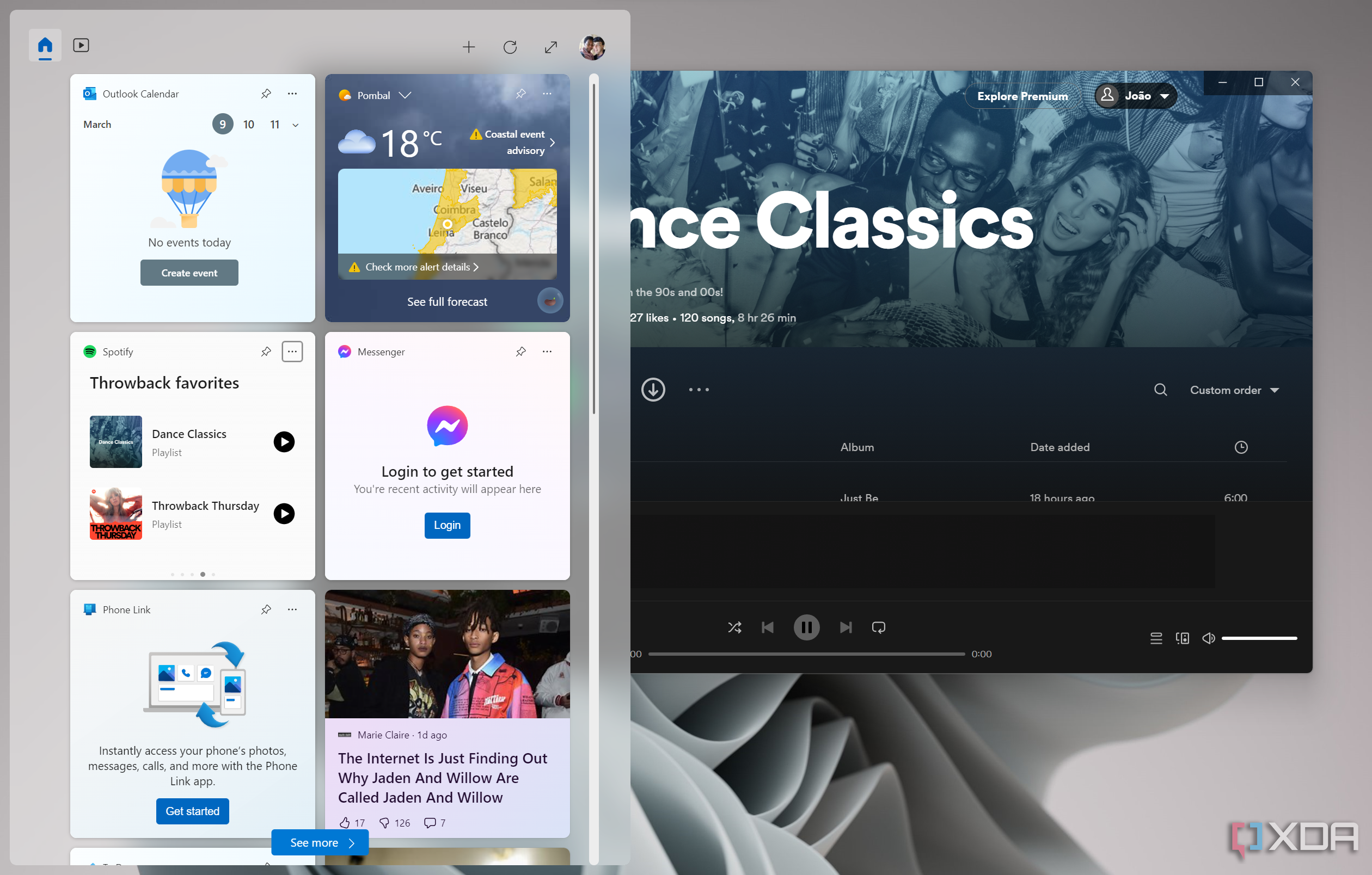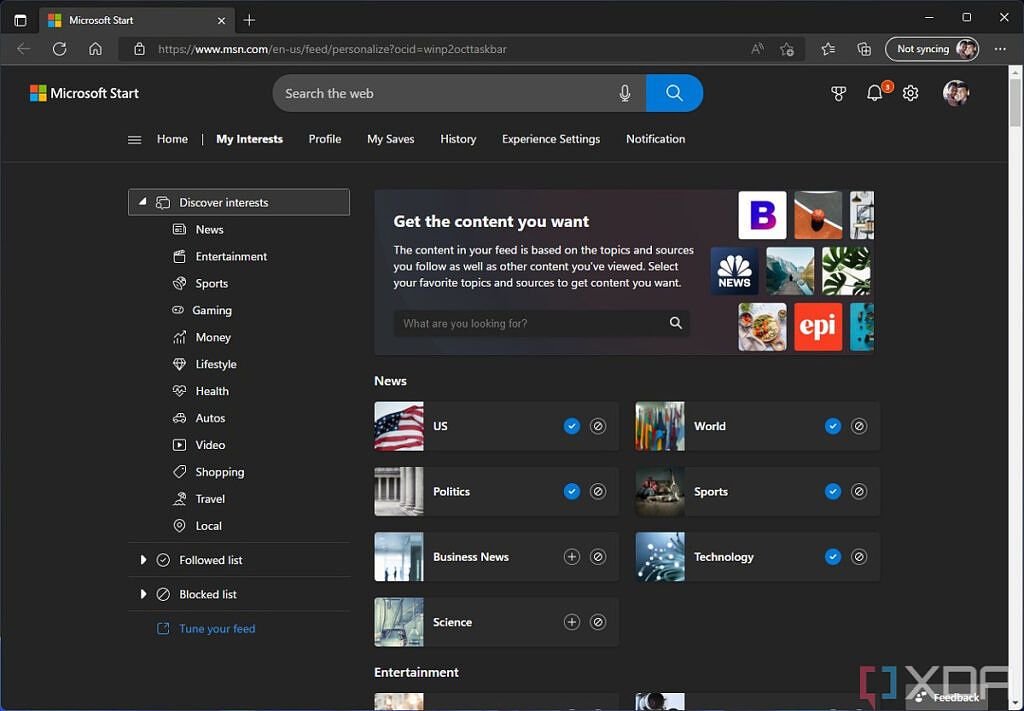Quick Links
Windows 11 has been out for about a year at this point, but it still only accounts for a portion of all Windows PCs, and for many users, it's still new. There are a lot of new features and changes in Windows 11 compared to Windows 10, and to help you out, we're taking a closer look at them.
In this article, we're taking a look at the Widgets pane, which are a new way to get access to at-a-glance information from Microsoft products and services, and more recently, from your own app. It's somewhat of a successor to the Live Tiles of Windows 10. When Windows 11 first launched, the only widgets available were based on web content from Microsoft, but recently, the company added support for third-party app widgets, too.
Using the Widgets pane on Windows 11
Accessing Widgets on Windows 11 is very straightforward. When you first use the new operating system, you'll probably notice the Widgets icon on your taskbar, represented by the white and blue square icon on the left side (though it was originally in the center). The icon may also be replaced by a weather indicator, one of the changes Microsoft has made since the Windows 11 launch. You can also open the Widgets pane by pressing Windows key + W on your keyboard or by swiping in from the left side of the screen if your device has a touchscreen.
In this pane, you'll see your widgets at the top, followed by a list of news powered by Microsoft Start. In the top-right corner, you'll also see a couple of icons that look like tabs, but these are just links to Microsoft Start web pages where you can see specific types of content, such as videos or games. If you'd like to see more content, recent versions of Windows 11 added the ability to see the Widgets pane in full-screen mode. Simply click the bi-directional arrow in the corner, next to your profile picture, and you'll see a full-screen view.
Initially, the Widgets pane required you to sign in with a Microsoft account, but this is no longer required unless you want to use the widgets that rely on it, such as OneDrive and Calendar. You can click your profile picture in the top right corner to sign in (or out) and manage settings related to Widgets. For example, you can stop the widgets board from opening when you hover over the taskbar icon or disable notifications and announcements on the taskbar.
Adding and customizing Widgets
Of course, the point of this experience is to be customizable with the widgets you care about. If you want to add widgets, click the + (plus) icon in the top right corner of the Widgets pane. Here, you can choose a variety of widgets provided by Microsoft, including Weather, Photos, Gaming, and so on, as well as from your installed apps that include a widget. There aren't many apps with widget support yet, but that will likely change over time.
Most of the default widgets are self-explanatory, but others may be a bit more complex. The Photos one shows pictures from your OneDrive storage (not your PC), Entertainment highlights movies and shows on the Microsoft Store, and Family Safety lets you keep tabs on your Microsoft family group. The Microsoft 365 widget is only available for commercial users of Microsoft 365, and highlights documents with recent updates, changes on SharePoint, and other activity inside your organization.
To add third-party app widgets, you'll need to be running a recent version of Windows 11 (build 22621.1344 or higher), and you'll also need to make sure your apps are up-to-date in the Microsoft Store. At writing time, apps like Facebook Messenger and Spotify have widgets, as well as Microsoft's Phone Link and Xbox apps.
Once you've added all the widgets you want, you can also resize them. To do this, click the ellipsis icon in the corner of the card, and choose from the sizes available. Some widgets are also customizable, so you'll see a Customize widget button. For example, the weather widget lets you choose a location and whether you prefer Fahrenheit or Celsius units, while the Sports widget lets you track specific sports leagues.
Managing your news and interests
Aside from the widgets themselves, you may notice a news feed when you scroll down the Widgets pane on Windows 11. This will show you news powered by Microsoft Start, the new name for Microsoft News and MSN News. The news list encompasses a lot of topics, and because of that, you might see a lot of things you don't care about. Thankfully, you can tailor your interests. To do this, click your profile picture in the top left corner, then click Manage interests at the bottom of the pop-up window.
This will take you to Microsoft Edge to manage your interests directly in Microsoft Start. You can choose the topics you're interested in from a selection of categories and specific publications you want to read or ignore.
Once you've set this up, it will affect your experience in every app or page powered by Microsoft Start. For example, the new tab page in Microsoft Edge also includes a news feed, which will reflect the changes you make here.
If you don't want to go through the trouble of setting everything up, you can always hide individual stories directly on the News Feed by clicking the Hide this story button (it looks like an eye with a line over it). You can choose to stop seeing news from that publication or use the ellipsis button to choose whether you want more or less news like the one you selected, among other things.
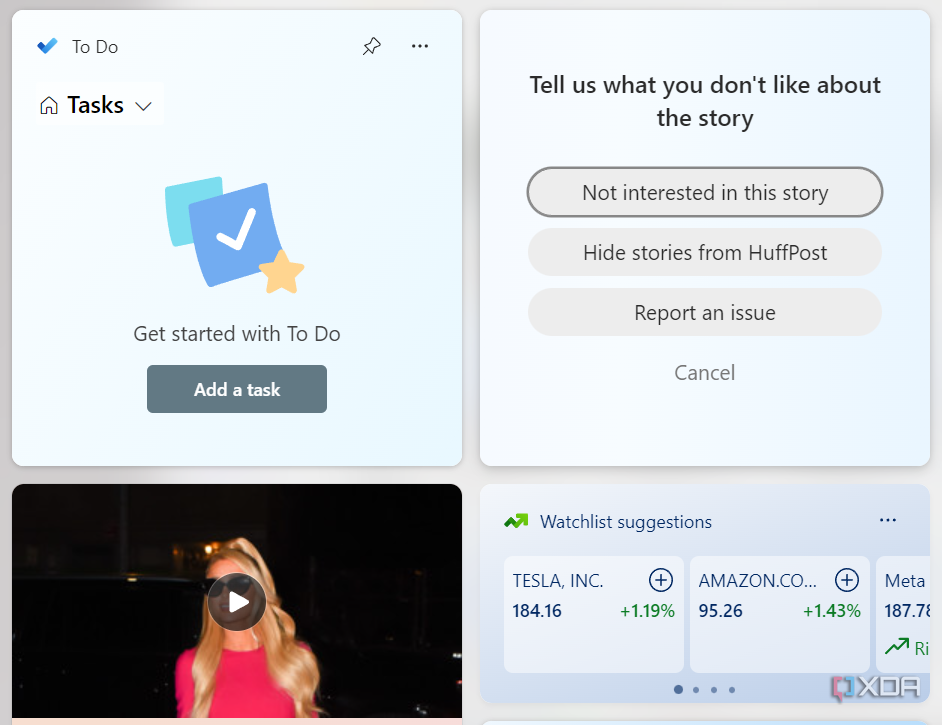
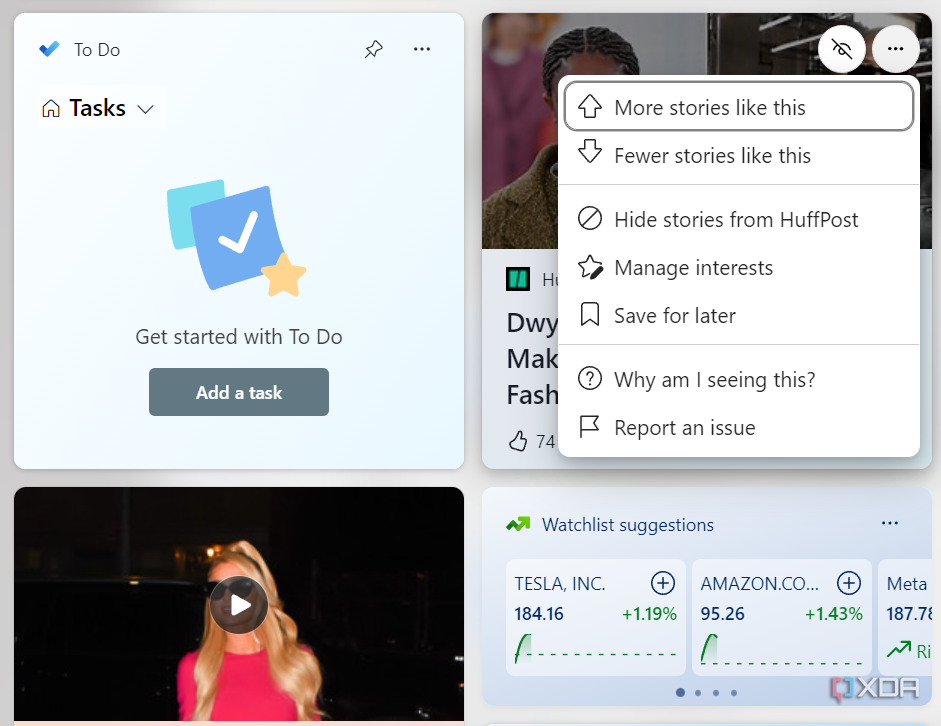
That's about it for the Widgets pane in Windows 11. It's still mostly focused on Microsoft services, but the recent addition of third-party widgets could change the game, and the possibility of widgets for your favorite apps is certainly exciting. There aren't many supported apps yet, but that's bound to change as time goes on and more developers add widget support to their apps.
If you're interested in trying Widgets and other Windows 11 features, you may want to check whether your PC meets the system requirements for the new OS. We also have a list of PCs that support the upgrade to Windows 11. And if you're interested in what's coming next, check out the Windows 11 features in preview that you can try right now.

